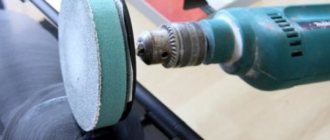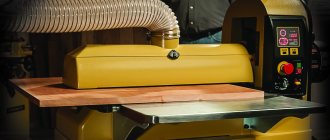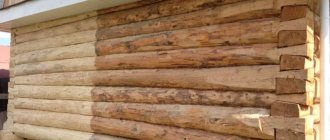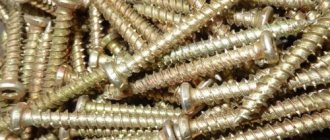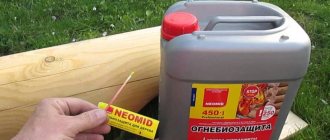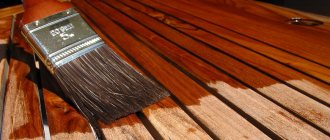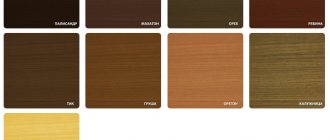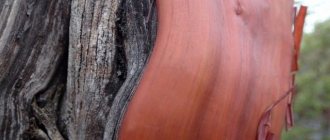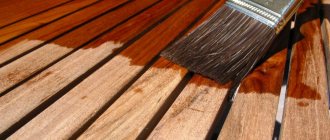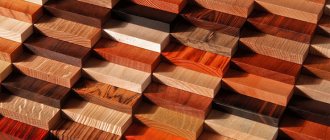Modern power tools are easy to use, but few people know all of their functions.
For example, a suitable sanding drill attachment can be used to make it easy to handle tedious work without spending a lot of effort on it.
Since there are all kinds of drill attachments, we suggest you take a closer look at them.
Advantages and weaknesses
Many manufacturers produce sanding attachments, but not all make sure that the product is reliable.
In competition, preference is given to making products cheaper, so quality suffers.
A third-rate tool will not last long, so you should not focus on the minimum cost. Although the price of high-quality attachments may vary significantly, such a purchase will still be less expensive than purchasing a special tool. Let's pay attention to some criteria.
Advantages
- In some cases, only with the help of this device can you sand a hard-to-reach surface area.
- Convenient for cleaning small parts.
- Devices for an electric drill are cheaper than specialized tools and accessories.
- You can make many sanding attachments yourself.
Flaws
- The device is less convenient to use than a specialized tool.
- You won't be able to work with some attachments without some skill.
- Poor performance.
- Sometimes you can’t do without a drill with adjustable chuck rotation speed.
Since the benefits are more significant, the attachments are popular and used by many people.
Where can it be used
Depending on the type of sanding attachment you purchase, you can use it to:
- clean metal from rust;
- remove paint from iron;
- polish metal;
- polish painted surfaces;
- polish wood parts exposed with varnish;
- polish glass;
- grind the edge of the glass;
- grind small parts;
- remove scale, burrs from metal and correct other defects in places where it is not possible to do this with another tool;
- perform grinding of products in places where grinding cannot be done with another tool.
This is an incomplete list that could be expanded.
Materials from which nozzles are made
All grinding attachments have one property in common: impact on softer material with the ability to scrape it off. But different jobs may require different rigidities. The following materials are used for nozzles:
- sandpaper;
- fabric materials or soft fibers;
- stones.
Sandpaper is used in the vast majority of work, as it allows you to process the surface with different forces, depending on the grain size of the material. Cloth or soft fibers are used for final polishing. Stones can be useful if it is necessary to make major changes to the shape of a part.
What types of devices are there?
Unlike attachments for grinders, any device for a drill is equipped with an axis fixed in the chuck.
Plate
Most drill grinding attachments are made of plastic. They are primarily intended for use in an angle grinder, but thanks to the adapter they can be mounted in a tool chuck.
This type of fastening is rigid and therefore not applicable in all cases. For example, even with a slight displacement of the nozzle, its edge can bite into the surface being sanded, leaving deep grooves.
For this reason, it is more convenient to use a hard plastic attachment by holding the drill still, as in the following illustration.
A rubber attachment is more convenient when working with a drill - thanks to its flexibility, accidental damage to the surface being worked is eliminated when the drill is tilted or pressed excessively.
Another type of similar grinding tool is made with a movable pin mount, but due to the high cost of the latter, it is not in great demand.
Cup
Structurally, the cup attachments are practically no different from each other, but the brush itself can consist of metal (steel, brass) wire or polymer abrasive bristles.
Each brush has a certain hardness and is used strictly for its intended purpose, established by the manufacturer - you can grind metal (removing traces of corrosion), wood and other materials.
Working with such a tool is fraught with some difficulties - by choosing the wrong angle, you can ruin the soft material being processed, and the drill itself constantly strives to move to the side when pressing the device over its entire area.
Disk
These attachments are similar to cup attachments, but the direction of the bristles is different - to the sides. Most often they are used when it is necessary to process material in hard-to-reach places.
Drums
This device resembles a drum in appearance, and thanks to this similarity it received the name of the same name. Such a drum attachment is a cylinder with sandpaper attached to the outer wall.
This device is secured by tension with a special bolt or fixed by pumping with compressed air. When using an open belt, tension is created by a rotating screw that pulls on the sandpaper.
With the help of drum attachments, it is not difficult to sand parts made of wood and metal. A grinding attachment with fine particles of abrasive material can be used when processing the edge of glass. Very convenient for grinding round and oval holes.
Fan
This attachment is made in the form of a disk with fixed fragments of abrasive material. This feature of the tool significantly expanded the range of sizes of processed parts, grinding the cavities of small and large holes. Thanks to the flexibility of the blades, parts of various shapes can be sanded.
End
Such nozzles have different shapes, and the working part can be made of various materials.
Designed for starting or finishing processing of holes and the inside of shaped workpieces. Jewelers and dentists use similar devices, only in miniature size.
Soft
When polishing a workpiece, round foam rubber, felt or leather attachments fixed on an axis can be used. Such a device wears out quickly; it can be used to polish metal or a coating exposed by varnish/paint to a mirror shine. The device is matched directly to the material being polished.
Read also: Density of tungsten and gold
Detailed description and characteristics of different variations
The type of nozzle largely depends on the characteristics of the material being processed and the required technological operation. In stores you can find the following design varieties.
- Plate. Used for finishing metal surfaces and polishing products.
- Disk. The design is great for hard to reach places.
- Cupped. Most often used for polishing decorative coatings and removing rust from metal.
- Drums. The nozzle is needed for working with sheet ends, crevices and rounded holes.
- Soft. The design is ideal for processing mechanically sensitive materials such as plastic, painted wood, etc.
- End The attachments have found their application in the high-precision industry, for example, jewelry. The size and shape of the head is selected in accordance with the required technological operation.
Homemade devices
It is not only the desire to save money that drives a person when creating a homemade nozzle - sometimes the necessary device simply cannot be purchased, and then one has to design and invent it. In this section we will show several options for attachments that can be made at home using improvised materials.
Based on Automotive Valve
To make such an attachment you will need one or more flat bottom car valves. It is better to make a larger nozzle from a truck exhaust valve.
The surface must be degreased and a head of the desired shape must be glued, which can be made of wood, dense foam, rubber and other suitable material, and then glued to the valve with epoxy or polyurethane glue.
Now you need to cut out circles from sandpaper. The nozzle turned out to be 5.5 cm wide - cut out the same circle for it.
Not reaching the center, cuts are made on the sides and adjusted so that each petal overlaps the other (as this device rotates).
Hot melt adhesive was used to glue the sandpaper.
After gluing the sandpaper, the edges of the petals were secured with staples.
The nozzle did an excellent job, but it quickly clogged because the sandpaper used was fine-grained.
Hence the conclusion - you need to make several attachments so that you can perform different types of work.
Advantages and disadvantages of nozzles
Figure 3. Pros and cons of the drill
Sanding attachments have advantages that, unfortunately, could not exist without some disadvantages. The advantages include:
- increasing the functionality of the drill;
- accessibility of nozzles;
- a huge number of varieties that allow you to perform any work;
- most attachments do not require specialist skills to use;
- Ease of use;
- the ability to process parts in hard-to-reach places, which a large grinding machine does not provide
Flaws:
- performance is lower than that of specialized tools;
- Some attachments require skill and experience;
- in some situations, the use of attachments can cause a number of inconveniences;
- you have to hold a heavy drill suspended;
- is an auxiliary tool.
Using sanding attachments will allow you to achieve almost production-quality results at home. The quality of work will be worse, and much more time will have to be spent. But the cost of such work is much lower, which makes it accessible to anyone.
Simple screw device
To make this attachment you will need a long screw, 2 washers, a nut, and several pieces of sandpaper.
A washer is placed on the screw. After cutting the sandpaper into squares, a hole is made in the middle, and all the pieces are put on the screw. Then comes the turn of the second washer, and this entire set is clamped with a nut.
By inserting the device into a drill, you can grind the cavities of wooden parts with it.
The disadvantage of such a device is that the threads are jammed by the drill chuck, which creates a problem with re-applying sandpaper. The unnecessary part of the thread can be removed or 3 slots can be made on the screw - our homemade device will be clamped with a drill chuck.
Polishing device
As in the previous case, we will need a screw, washers and a nut, only felt will be used instead of sandpaper. Having marked a piece of felt, cut out circles of the same radius from it.
Holes are made in the center of the workpieces, they are threaded onto a screw, and then clamped with a nut. The finished device is inserted into the drill chuck.
Felt alone will not polish the part, so after turning on the drill, rub the attachment with Goya paste. After this you can start working.
For the purity of the experiment, an old and rusty wrench was used. As you can see in the photo, after a short polishing, the treated area was effectively cleaned in a short period of time.
This polishing attachment can work with both flat and shaped parts, but it will not cope even with small recesses.
Leather circle
As in the device described above, leather can be attached instead of felt, resulting in a device for straightening wood cutters.
We use a file
A round file can be used as an attachment by removing the handle from it and holding the shank in the chuck. It is better to secure a file of small diameter to the base.
Using this device, it is convenient to grind holes and semicircular depressions.
Epilogue Regardless of whether you use a purchased drill attachment or make one yourself, it can be an invaluable assistant in many jobs.
The main purpose of a drill when working with wood is to drill holes. However, this tool is much more functional than many people think. To expand its functionality, special wood attachments are used, which, in fact, is the subject of this article.
Electric drill with attachment
Next, we will look at what drill attachments exist for woodworking and for what purposes they are used.
Cup
In a cup nozzle, the working body has the shape of a bowl, on which more or less rigid bristles made of wire or plastic are attached. It is used for cleaning surfaces from rust, solid contaminants, welding slag and remnants of old paintwork.
Cup attachments for drill
There are also soft cup attachments with a working body covered with felt or foam rubber. They are used for polishing painted surfaces.
Using it requires developing a certain skill - when the axis of rotation deviates from the vertical or when the drill is held weakly, the cup has a tendency to move to the side, which can lead to damage to the polished surface or grinding of areas not intended for processing.
Types of nozzles
Not everyone knows that with the help of attachments, in addition to drilling holes with a drill, you can perform many other operations, such as:
However, it should be said right away that attachments are not a complete replacement for special equipment. The quality of operations performed with their help is inferior to individual instruments. However, in some cases they can significantly simplify wood processing with your own hands.
Below we will take a closer look at all types of attachments for performing the above work.
Drill Drum Attachment for Sanding Wood
Sanding and polishing
There are many types of attachments for grinding and polishing wooden surfaces, the main ones are listed below:
| Type of transaction | Types of nozzles |
| Grinding | Nozzles of this type are a rod with a grinding material attached to it, which can be used as: |
- Sandpaper;
- Special brushes;
- Rigid fabric such as felt.
According to the type of design and shape, grinding heads are of the following types:
- Disc discs - made by analogy with discs intended for conventional grinding machines, the only thing is that instead of threads they have a pin for fixing in the chuck.
- Cup - they are a cup with a brush. They are usually used for removing old paint from wood and other rough treatments.
- Drum type - they are a cylinder with sandpaper attached to the walls. Such heads can be used to process the surface inside the holes, as well as the end of the boards.
- Petal – a large number of sandpaper petals are attached to the rod of this tool. With the help of such attachments, radius grinding of wood with a drill can be performed, as well as processing of parts with complex surfaces.
Read also: Table of roller bearing sizes by diameter
Based on the degree of softness, polishing tips are divided into the following types:
In addition, they can vary in shape and size, which allows you to choose the most optimal tip for polishing a particular type of surface. For example, conical and thin cylindrical nozzles can be used to polish holes.
Felt tips for polishing
The choice of nozzle in this case depends on the operation being performed. For example, if you need to sand a surface in a hard-to-reach place, an excellent option is a sanding attachment on a drill for petal-type wood. If you need to clean the surface from paint or renew it, you should give preference to cup attachments.
Making large diameter holes
To make large diameter holes, several types of nozzles are used:
- Feather drills - thanks to the flat cutting part and special sharpening, they allow you to make holes in wood, chipboard, plywood and OSB with a diameter of up to 60 mm. It should be noted that feather drills are available not only for wood, but also for metal.
Attachment with a set of wood crowns
- Wood drill bit – allows you to drill holes in wood with a diameter of up to 100 mm.
- Forstner drill – has a centering tip. Using such a drill, you can make blind holes, for example, for installing hinges in furniture making.
In the photo - Forstner drills
Advice! When making holes in chipboard and other similar materials, do not press the drill too hard, as this can lead to chips and cracks.
It must be said that there are special devices on sale that allow you to change the drilling angle. Their purpose is to provide ease of drilling in hard-to-reach places.
Cylindrical wood cutter for drill
Milling
With the help of special tips, the drill can even be used for milling wooden parts.
There are different types of cutters (cutters):
- Cylindrical;
- Face;
- End;
- Disk;
- Shaped, etc.
The choice of cutter depends on the type of operation being performed. For example, if it is necessary to make grooves in a part, use disc cutters for wood drilling. To make complex cuts, it is better to use shaped cutters.
It should also be noted that cutters differ in the shape of the teeth, which are:
- Pointed;
- Backed.
The good thing about backed teeth is that, if necessary, they can be resharpened, while pointed teeth cannot be restored.
Wood cutting attachment
cutting
The attachment on a drill for cutting wood is a rather complex mechanism that works on the principle of a jigsaw. It can be used to cut wood up to 20 mm thick, as well as plywood and chipboard.
In addition, the attachment can be used to cut plastic and even steel. Thus, this device will be useful to every home craftsman, unless, of course, there are special tools for cutting a particular material.
However, it should be noted that the price of such a nozzle is quite high, which is explained by the complexity of its mechanism.
Advice! Before making an internal cut with a jigsaw attachment, you need to drill a hole with a diameter equal to the width of the file.
Nozzles for screwing in self-tapping screws
Screwing in self-tapping screws
The nozzle for screwing in self-tapping screws is the simplest type of tip. However, it should be noted that it can only be used with those types of drills that have a speed reduction option.
These products are usually sold in sets containing heads of several diameters. This allows you to work with self-tapping screws and screws of different sizes.
Here, perhaps, are all the most common types of nozzles. It must be said that there are also less popular tips, for example, flexible drills on cables, which allow you to make holes in hard-to-reach places, as well as angle attachments, which allow you to turn a drill into an angle grinder. True, they can be found on sale much less often.
Drill with angle attachment
Criterias of choice
You can turn a drill into a universal tool by purchasing attachments for different purposes. Choosing suitable devices from a huge range is not easy. Therefore, it is recommended to take the following criteria into account.
Manufacturer
Various alloys and polymer materials are used to make nozzles. The material does not always have sufficient strength and wear resistance. High-quality equipment can be purchased, giving preference to well-known brands:
- TUNDRA;
- Dremel
- SKRAB;
- Kolner;
- Sibrtech;
- Caliber;
- Matrix;
- BISON
By purpose including drill and screwdriver
Drill accessories are available in different types. One of the classification features is the purpose of the nozzles.
Drill brush attachments
For grinding . The device is used to make the working surface smooth and presentable. It is made from highly efficient abrasive materials (aluminum oxide, silicon carbide, synthetic diamond). The abrasive is fixed to the base of the equipment by gluing or applying it to a base, which can be either fabric or paper.
For milling . The range of problems solved by this type of device is wide. It includes: work with end edges. High-quality alignment of grooves, etc. By supplementing the tool with equipment with auxiliary supports and attachments, it is possible to obtain from a drill equipment that fully performs the functions of a milling machine.
For polishing . Externally, the device resembles a grinding device. The difference lies in the material used to make the working part of the equipment. These are usually soft fabrics, felt or foam rubber.
HELL DEVICES!!! 35 ATTACHMENTS for DRILL, SCREWDRIVERS and GRINDERS with ALIEXPRESS
For cleaning . Another name for devices is brushes. They are made from wire or other rigid materials. The purpose of the attachment is to remove old coating or rough wood processing. The scope of application is limited to rough work, which is carried out before grinding and polishing.
For cutting . The distinctive qualities of this type are the high price and complexity of the design. The functions of a tool equipped with such an attachment are equivalent to the purpose of a jigsaw. With the help of such a device, it becomes possible to cut wood blanks whose thickness reaches 20 mm. The products are also suitable for cutting some alloys and polymer materials.
For working with self-tapping screws . The simplest type of nozzles. It is used in combination with a tool that can operate at low speeds. Manufacturers produce kits containing equipment with different diameters. This expands the range of applications.
Flexible shaft . The drill device includes a gearbox and an electric motor. They are enclosed in a voluminous housing, which reduces the maneuverability of the instrument. This drawback can be eliminated by installing a flexible shaft. Thanks to this solution, it is possible to penetrate small cavities and other hard-to-reach places. Range of tasks performed using the attachment: grinding, engraving, removing burrs and old coating, milling, drilling, polishing.
Riveter attachment for drill/screwdriver
Rivet nozzle . Special equipment is produced for installing rivets. Purchasing it to perform a small amount of work is considered an unreasonable waste of money. You can beat the situation by equipping the drill with a special riveter attachment. Most often, the equipment is equipped with rivets of different parameters.
Eccentric . This is a practical device that allows you to perform a number of tasks in close proximity to the edge of the workpiece. Processing wood or making holes in hard-to-reach places will become commonplace with minimal labor costs.
Angle attachment for drill
Corner . The purpose of the device is to make holes in areas where a conventional drill cannot penetrate. The design is a body consisting of two parts. They are located at right angles. The drive spindle is located inside. There is also a unit that holds the drill and ensures its rotation.
Design features
Drill attachment for sharpening drills, D 3, 5-10 mm SPARTA
The modern range of attachments is diverse. The products have characteristic design features:
- a certain form;
- options;
- lines and curves.
Plate . The equipment is available in several versions. The constant element is the abrasive surface. The grinding product is made of rubber and plastic. The polishing attachment has a fine-grit sandpaper surface. There are also designs on sale that can adjust the angle of the abrasive fixation rod.
Cupped . Devices of this type are used for removing old paint and other operations involving rough processing of wood. Cup-shaped structures have a characteristic shape, a tightly fixed brush, which is made of abrasive nylon or wire material. The choice of equipment is carried out taking into account the degree of alignment of the working plane.
Drums . They are used primarily for processing the end parts of parts and making holes. Externally, the design resembles a barrel. Its shape is regular cylindrical. The working area of the equipment is covered with sanding tape. Drum products do an excellent job of sanding wood parts. During their rotation, a high-quality passage is carried out along the roundness and holes of the processed material.
End . The designs of this type of nozzles are characterized by external differences and the materials from which they are made. The scope of application of end tooling includes the processing of the internal surface of the part and holes at the initial and final stages of grinding.
Disk . This is a type of cup design. A distinctive quality is the location of the hairs. They are directed in different directions (opposite). This solution allows processing wood blanks in places where it is impossible to penetrate due to the volume of the drill body.
Flap circle for drill, P 80, 80x30x6 mm
Petalaceae . Another name for products of this type is fan. The nozzles have a rod to which a large number of sheets of sandpaper are fixed. Externally, the equipment for going to a flower. The scope of application of the flap design is grinding and polishing with a radius pass of the tool along the working surface. It is advisable to use the tool for accurate processing of parts with complex terrain.
Soft . The products are characterized by minimal abrasion resistance. Used for polishing work. Nozzles are made from foam rubber, leather, felt. The design is characterized by a rounded shape and reliable fixation on the axis.
Number of elements in the set, pcs.
The set may contain a different number of attachments. Each manufacturer completes the equipment at its own discretion, but running positions must be taken into account. The package contains from 2 to 349 devices. Depending on the number of items in the organizer, the price of the set changes.
Basic rules for working with a drill and attachments
When using an electric drill, like any other power tools, the operating instructions and safety regulations must be strictly followed.
Below are the main ones:
- Before processing, the workpiece must be securely secured.
- The nozzle must be securely fixed in the cartridge. If there is play, it is prohibited to work with it.
- When working with a drill, it must be held with both hands, especially for powerful models.
- The pressure should not be excessive.
- It is forbidden to turn on the reverse mode until the drill has stopped completely.
- When working, you must use personal protective equipment - gloves and goggles.
- After completing the work, do not touch the drill or other tip for some time, as you may get burned.
Note! You should not try to make a nozzle or adapter yourself. The fact is that electric drills operate at high speeds, as a result of which a poor-quality or unbalanced attachment can cause injury.
Observing these simple injuries will make the work safe, which is the most important thing when performing any construction operations.
Read also: Specific heat of fusion of brass
Conclusion
Thanks to the large number of woodworking attachments available, the drill is one of the most functional tools. It especially makes sense to use all kinds of tips in cases where the need to process wooden parts arises only from time to time. Of course, for frequent and especially professional work, it is necessary to purchase separate tools.
You can get some additional information on the topic discussed above from the video in this article.
The use of special devices clamped in the chuck of this power tool makes it truly multifunctional. For example, you can even cut sheet iron with it. Considering the variety of drill attachments for woodworking, it is unrealistic to go into detail about each of them in one article. We will deal only with attachments that allow using a drill to perform high-quality and quick surface mechanical processing of wood.
What is it? Preliminary cleaning of the surface (rough), removal of burrs, grinding and bringing to a mirror shine (polishing). All other technological operations with wood - milling, drilling, screwing in fasteners, cutting - do not belong to the concept of “processing”. This is what the author proceeds from. The difference in the listed types of work in relation to attachments is in the rotation speed of the drill chuck and the type of device. Which one to choose is decided mainly based on the required degree of processing of the tree and its species (that is, the density of the structure).
How to use attachments
The main areas of application for drill attachments are as follows:
- cleaning surfaces from rust, old paint residues and other contaminants before painting;
- polishing metal surfaces;
- polishing paint and varnish coatings;
- polishing glass or plastic (for example, car headlights);
- glass edge grinding;
- cleaning of metal parts after welding;
- grinding surfaces in hard-to-reach places.
Polishing the surface using a nozzle
In addition to grinding, special devices are also used for cutting thin sheets of metal and for plucking bird feathers.
Classification of attachments for wood processing
Prices are indicative, in relation to the Moscow region, in Russian rubles
By type of abrasive
- Hard fabric.
- Foam rubber.
- Plastic.
- Sandpaper of different grain sizes.
- Rubber.
- Cord brush.
According to the degree of wood processing
- Abrasive (rough).
- Grinding.
- Polishing pads (soft and super-soft pads).
By execution
Depending on the configuration, the attachments are used not only for surface treatment of wood. They can be used to grind (polish) holes (as a replacement for a sander). This is easy to do with cylindrical (thin) or conical devices.
Plate attachments
Available in several modifications. The difference is in the form of abrasive material. If wood sanding is required, then it is rubber (the more preferable option) or plastic. For polishing, it is advisable to purchase attachments with fine-grained sandpaper fixed on the working part. They can achieve higher quality (fine) wood processing.
Recommendation: Effective processing of wood with a plate-type drill attachment is difficult because it is difficult to hold the drill in a strictly vertical position. To achieve a good result, it is advisable to fix the tool and move the workpiece relative to the working part. The machine for attaching the drill is easy to assemble yourself.
There are nozzles on sale that provide for adjusting the angle of the abrasive mounting pin. But they are quite expensive, and not every store can buy them. Therefore, a machine with the ability to change the position of the drill is a more acceptable solution.
Drum attachments
Mainly used for processing the end parts of wooden workpieces and holes. They have a cylindrical shape and differ in the way the sanding tape is attached - using a bolt or special inflatable blocks. Some types of attachments of this type are also used in everyday life for plucking (at low speed) birds when it comes to a large amount of work.
Cup attachments
The assortment is significant. The differences are in size and abrasive material. These can be either metal “hairs” (hard wire) or thick fabric, leather, felt and even foam rubber. The choice of device is determined by the desired degree of wood processing. If you want to achieve a sharper highlighting of the texture of the material, then the wood pulp is sampled using just such attachments.
A variety of devices in this group are disk attachments. The difference is clear from the figure (the villi are located diametrically).
This type of attachment can also include fan devices. They are also called petal.
The main purpose is to polish wood at the final stage of processing.
Disc and plate
Disc grinding attachments are similar in design to cup ones, but the wire or plastic bristles in them are directed not forward, but to the sides, in a plane perpendicular to the direction of rotation of the shaft. They must be used with caution, as they can damage the sanded coating.
Disc attachment
The plates consist of an elastic plate, to which it is attached with glue, double-sided tape, Velcro (Velcro), or a circle of sandpaper is clamped in the center. The edge of the plate can be curved, which allows you to bring the sandpaper to the surface at different angles and process hard-to-reach places.
Disc ones allow, among other things, the use of abrasive and cutting discs from angle grinders (grinders). They are attached to the shaft through a centering adapter.
In order not to damage small parts, it is better to secure the drill in the machine and bring the part to the disk, holding it with your hands or clamping pliers.
What to consider when choosing drill attachments
- Using attachments, for example, the same grinding attachments, you can process not only wood, but also other materials - metal, glass, ceramics, and so on. You just need to select the appropriate modification of the device.
- According to reviews from practitioners, identical attachments from different manufacturers can differ greatly in effectiveness and duration of use. Therefore, you should not save on purchasing products from a little-known brand. It is not a fact that such a device will not become unusable after short-term use.
- Even an expensive attachment will cost much less than a special power tool. For example, a grinding machine, for which you will also have to additionally purchase the appropriate accessories (blade, wheel, etc.) depending on the type of product.
- When choosing any attachment, you should focus on the following features of your electric drill: power, chuck size, ability to regulate speed. Otherwise, the ease of use of the device and the high quality of wood processing are not guaranteed.
The article discusses the main types of drill attachments. Each group is available in several modifications; In addition, manufacturers regularly supply some new products to the market. Therefore, the choice of size, configuration, and abrasive must be made for a specific technological operation, especially since it exists and is quite large. This can achieve the highest quality results in wood processing. Considering that it is impossible to foresee everything, especially without extensive practical experience in working with nozzles, it is better to purchase them in specialized stores. Based on the characteristics of the buyer’s drill, the seller will help make the best choice.
| Polishing | Polishing attachments resemble the heads described above, the only difference is that the filler is made of soft materials, which means they provide a finer surface finish. Most often, these products take the form of a disk made of soft material on which foam rubber, felt, felt or other soft filler is attached. |
What are the nozzles made of?
Equipment for grinding and polishing according to the type of material is classified into three main types:
- Emery cloth is the most popular type of abrasive substance for sanding and cleaning. Wooden parts can be polished with cloths. Sandpapers have different degrees of roughness and grain size for roughing and finishing parts
- Soft materials - these include substances such as vinyl, felt, foam rubber and others. The use of such materials allows you to clean the surface from corrosion, rust, as well as remove primer from the car body and even remove putty from the wall
- Grinding stones - the use of attachments made from special abrasive stones allows not only to clean surfaces, but also to eliminate various types of defects. They are used for processing metal structures, concrete structures, ceramics, glass, etc.
To polish a car body, you will need a felt attachment, which can quickly and effectively bring the car’s paintwork to a shine. The use of the units in question also allows you to polish and clean the surface of various jewelry, such as gold, silver, etc.
